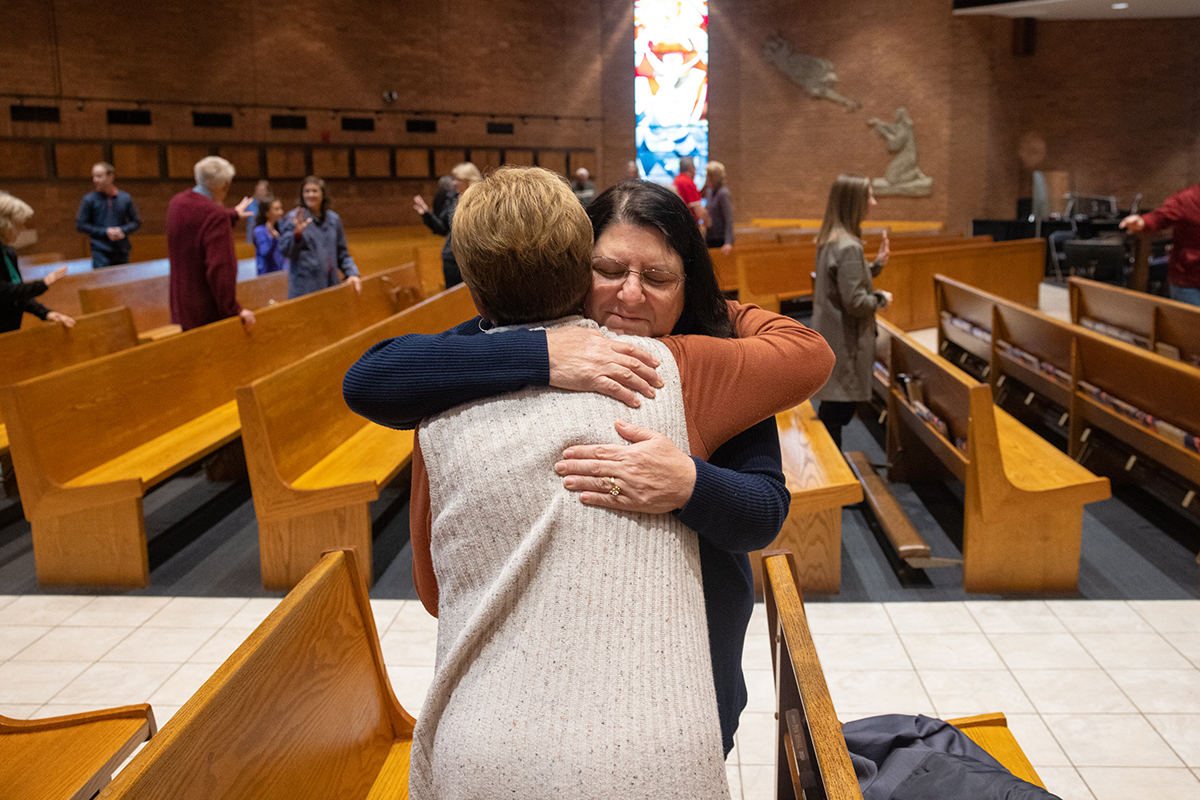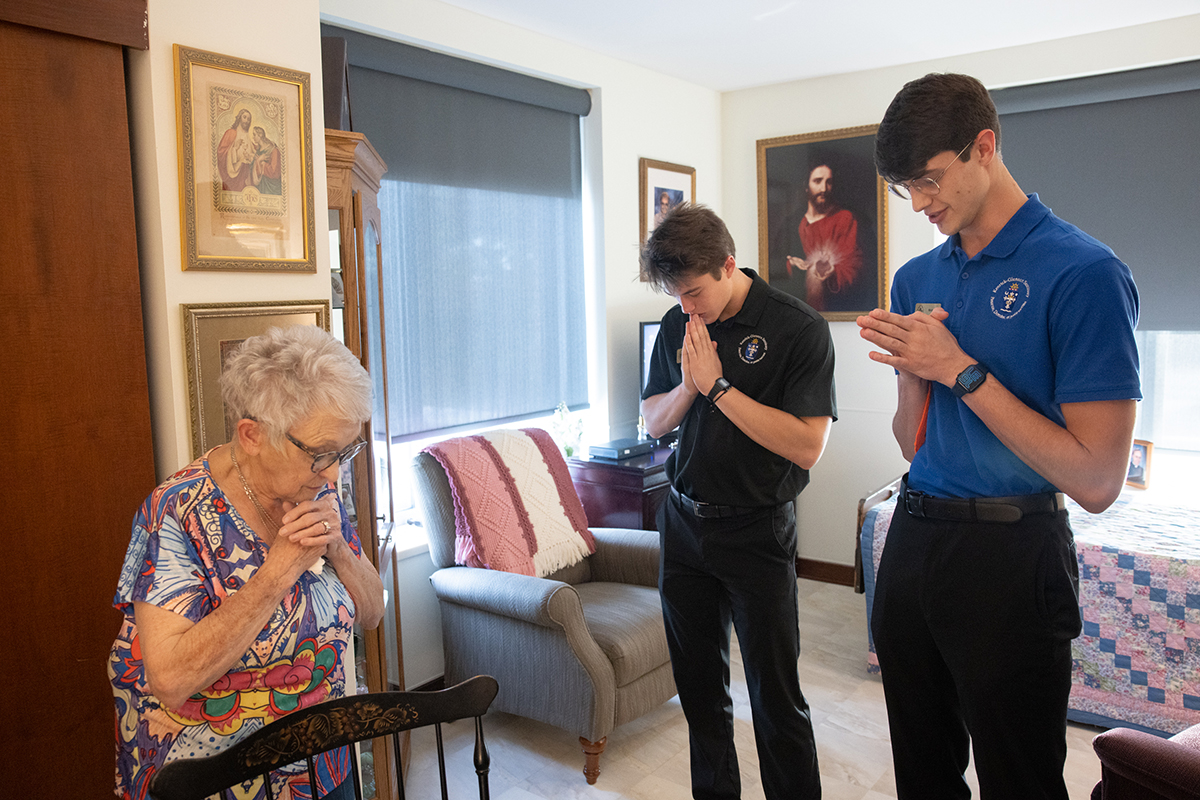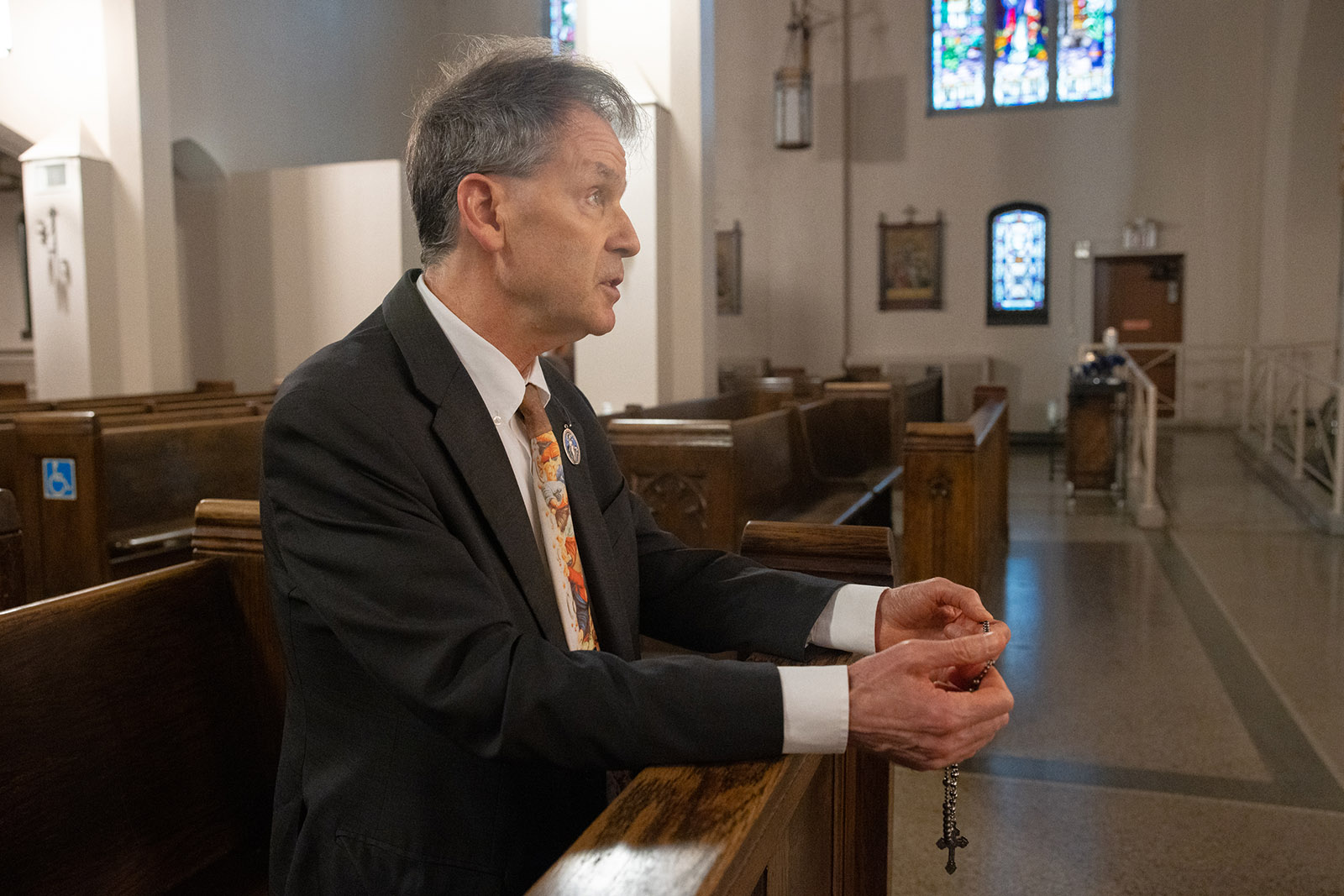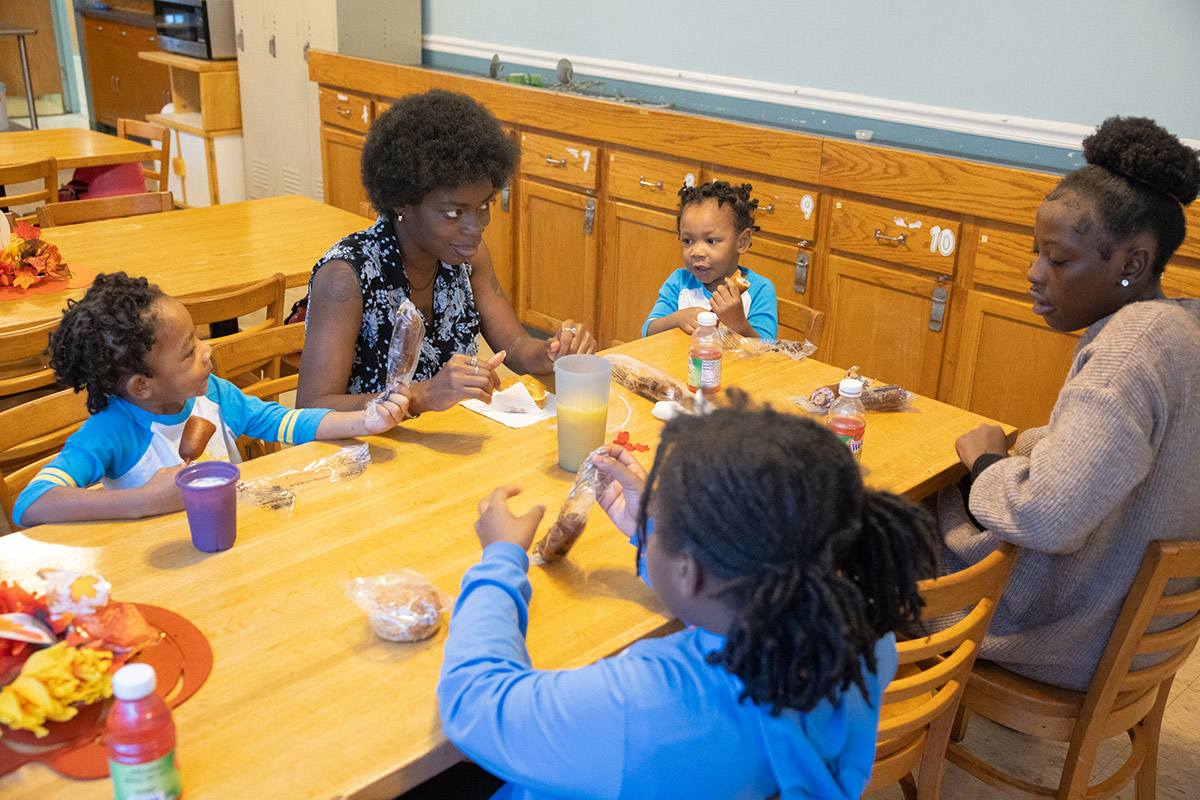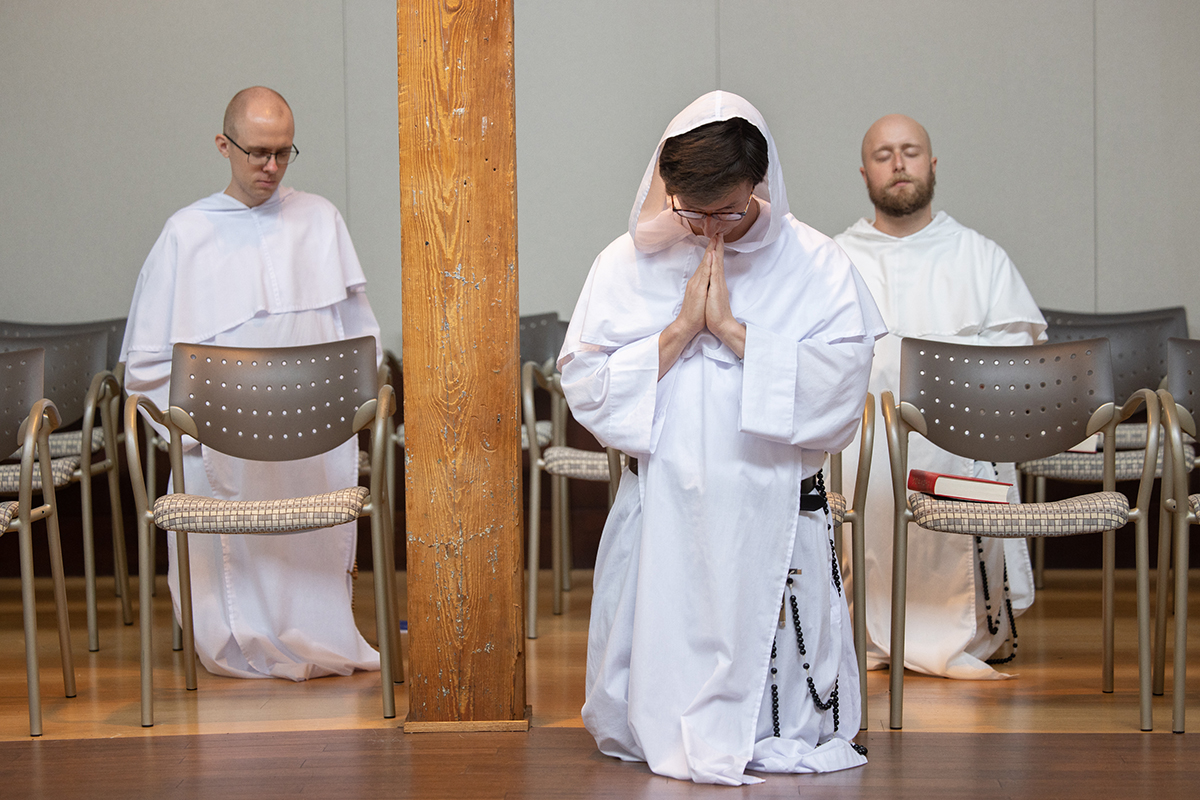Hundreds of Nativity scenes — under one roof
It started with a small Nativity scene, with little hand-painted figurines. Years ago, Carol Ehlert was working in a craft store at Village Square shopping center in Hazelwood and saw it come into the store. She knew she had to buy it.
Then came the Precious Moments Nativity set, which she joked she never told her husband how much it cost.
Eventually, collecting Nativity scenes became a nearly 50-year hobby for Ehlert, a member of St. Joseph Parish in Cottleville. Ask her how many she has, and she’ll tell you she’s simply lost track.
“I don’t know,” she said with a slight chuckle. “I think there’s at least 200.”
That means she easily has at least 600 wise men, and 400 Mary and Joseph figurines. And the animals … well, it’s safe to say she has more than plenty.
Ehlert carefully curated a selection of about 50 of her favorite sets and included them in a parishwide display of Nativities, an annual event held at St. Joseph the weekend after Thanksgiving. She keeps all of her sets on display throughout the year at her home in St. Charles, most of them lined along bookshelves in a loft overlooking the living room.
“It just kind of snowballed,” she recalled. Her husband Chuck, who passed away in 2014, often brought home nativities from his travels. He worked in public relations for Ozark Airlines for 20 years, and 20 years in the tourism industry with motor coach tours — which took him to all 50 states and several other countries. Their children also gave her nativities for Christmas or her birthday.
Among her most treasured pieces:
• A set from Guatemala, which her daughter Tonya brought home from a summer training with the Army Reserves more than 10 years ago. The set features a stable covered with grass native to Guatelama.
• One featuring Native American figures made from terra cotta, which she received from her husband in 2002 when she was in the hospital after being diagnosed with breast cancer. “He was on a trip (for work) and found that in New Mexico,” she said. “He brought that home when I was still in the hospital.”
• A hand-crafted olive wood set, from when she and Chuck went on a vacation to Egypt about five years ago. “I got that for a steal,” she said. “I thought Egypt was very interesting. It’s such old history, so much to see.”
• Other figurines include a Santa Claus with Baby Jesus. “It took me a couple of years to convince (Chuck) I needed that,” she said with a laugh.
• Her smallest set is a tiny piece hand-carved out of soapstone, measuring about two inches tall. Years ago, she and her husband were traveling and stopped at a flea market “in a little town in mid-Missouri somewhere.” The owner didn’t have any in the store, but he said, “I’m sure I have some in my warehouse, which is five minutes from here,” Ehlert recalled. “He said, ‘I’ll go look,’ and he came back with this little soapstone.”
• A wooden set made in Ethiopia (obtained during Chuck’s travels somewhere in the United States); opening the lid reveals a small, hand-carved Nativity scene.
• Several sets featuring animals as the main characters — including ducks, bunnies, cats, dogs, bears and mice.
While the stories and styles of her nativities range from exquisite to simply cute, in all of them, a part of salvation history is depicted, helping us to understand the birth of Jesus in a visual way.
Pope Francis has said that the Nativity scene “transmits hope. Each character is immersed in this atmosphere of hope.” Each image found in the Nativity, he said, represents an aspect of this hope, such as the city of Bethlehem which, despite it not being a capital city, was the place chosen by divine providence, which “loves to act through the small and the humble.”
The figures of Joseph and Mary, who both believed in the words of the angel, gaze at the child they were told by God to name Jesus, the pope said.
“In that name there is hope for every man and woman because through that son of a woman, God will save humanity from sin and death,” he said.
The image of the shepherds, he continued, represents the humble and the poor who witness the long-awaited promise of hope and salvation while the angels singing at the birth of Christ represent the “praise and thanksgiving to God” expressed in Christian life.
“In these days, by contemplating the creche, we prepare ourselves for the Nativity of the Lord. It will truly be a feast if we receive Jesus, the seed of hope that God sows within the furrows of our personal history,” Pope Francis said.
For Carol Ehlert, reflecting on each of her Nativities gives her pause and reminds her of the real meaning of Christmas.
“Thinking about Mary, who traveled to Bethlehem on that donkey, while she was pregnant — it just blows my mind,” she said.
Catholic News Service provided some of the information for this story.
Nativities Galore
The Way of Lights display at the Shrine of Our Lady of the Snows in Belleville, Ill., focuses on the birth of Christ, the one true light of the world. The display has been offered by the Missionary Oblates of Mary Immaculate since 1970. There also are indoor and outdoor activities for the whole family. For more information, visit www.wayoflights.org.
The Star is a movie about a small but brave donkey named Bo, who yearns for a life beyond his daily grind at the village mill. One day he finds the courage to break free, and finally goes on the adventure of his dreams. On his journey, he teams up with Ruth, a loveable sheep who has lost her flock and Dave, a dove with lofty aspirations. Along with three wisecracking camels and some eccentric stable animals, Bo and his new friends follow the Star and become unlikely heroes in the greatest story ever told — the first Christmas. The movie is currently showing in theaters.
All Saints Parish will host a Stations of the Nativity from 7-8 p.m. Sunday, Dec. 17, at the church, 7 McMenamy Road in St. Peters. Following a similar format to the Lenten Stations of the Cross, the prayer service includes six stations: the Prophecy of Zechariah, the Annunciation, the Visitation, birth of John the Baptist, Joseph’s dream with the angel, and the Magnificat. The evening will include readings, prayer, meditation and music. Families are invited to bring the Baby Jesus from their home nativity sets for a blessing
All Saints also is hosting a Christkindl Abend, from 5-8 p.m. Dec. 13-14. The free event includes a light meal, live Nativity with animals, and a manger, an arbor of lights in the grotto, story time with Father Don Wester, and photo booth.
In an alternative to the Elf on the Shelf, Balthazar, Melchior, Caspar and their camel go on a search for Baby Jesus in the Wise Men Adventures. Each day, they’re placed in a new location, looking for Jesus until the Epiphany in this fun family activity. Read more at Catholic Inspired: www.stlouisreview.com/Tfr
Chrstmas crèche is treasured symbol of God’s love
By Msgr. Matthew Mitas
According to the legend of St. Francis, the great Poor Man of Assisi was praying one day in the collapsed wreck of the church of San Damiano when Christ spoke to him from its ancient crucifix and said, “Francis, rebuild My Church, which, as you can see, has fallen into ruins.” Francis, at first, took Christ ultra-literally and spent the next few months restoring the fallen building, but, in the process of doing that, he came to realize that his greater mission was to revitalize the Catholic Church through his Franciscan way of radical Gospel simplicity.
As he was rehabilitating the Catholic edifice, St. Francis established many of our best, best-loved and most popular Catholic traditions. One of them was the practice of walking the Way of the Cross, meditating on its 14 “stations,” or stopping points, along the way. He had made a pilgrimage to the Holy Land, a dangerous thing in those days because the Crusades were still being fought.
St. Francis not only survived, but in the process almost converted the sultan himself to Catholicism! His own faith was so enhanced by his walking in the footsteps of the Savior that he wanted everyone to share his experience, but realized that his European brethren would not be able to make the journey to Palestine. Undaunted, he brought the devotion of the “Via Dolorosa,” the Way of the Cross, to the parish churches, first of Europe, and now all around the world.
Another tradition begun by St. Francis was inspired by his visit to Bethlehem, namely, the Christmas crèche. In 1223, shortly before his death, St. Francis desired to see a live re-enactment, with real people and animals, of Jesus’ Nativity. He thought it would help people to meditate better on that mystery of the faith if they had a vivid image of it firmly in their minds. He decided to stage it in the town of Grecchio (sometimes spelled Grecio or Greccio), first asking permission of the pope (who quickly granted it), fearing that his display would be taken as a mere novelty. He meant it to be a deeply, devotional experience. (By the way, some believe the word crèche derives from Grecchio, but it’s just the old French word for “crib.”)
According to St. Bonaventure, writing a few decades later, when the scene was set and everything was in place just as he wanted it, St. Francis summoned the townspeople to his “tableau vivant” and chanted for them the Gospel of Jesus’ birth. Being a deacon, he next preached a beautiful sermon on the poverty of the newborn King. Then something truly marvelous happened, which astonished even the crowds who had already grown accustomed to seeing miracles happen at the hands of St. Francis. “The Man of God” (as St. Bonaventure calls him) turned to the manger and found, lying on top of its straw, a “marvelously beautiful” infant, asleep. The simple townsfolk of Grecchio piously saved the remnant bits of straw from the manger and found them to have miraculous powers. It confirmed in their minds that St. Francis had indeed provided for them a re-enactment of the Nativity far more real than they could have imagined! Ever since then, the crèche, whether under the tree or in the town square, has become a treasured symbol of God’s love and a reminder of His humility.
This article appeared as a Dear Father column in a previous edition of the Review. Msgr. Mitas is pastor of St. Angela Merici Parish in Florissant.
It started with a small Nativity scene, with little hand-painted figurines. Years ago, Carol Ehlert was working in a craft store at Village Square shopping center in Hazelwood and saw … Hundreds of Nativity scenes — under one roof
Subscribe to Read All St. Louis Review Stories
All readers receive 5 stories to read free per month. After that, readers will need to be logged in.
If you are currently receive the St. Louis Review at your home or office, please send your name and address (and subscriber id if you know it) to subscriptions@stlouisreview.com to get your login information.
If you are not currently a subscriber to the St. Louis Review, please contact subscriptions@stlouisreview.com for information on how to subscribe.

